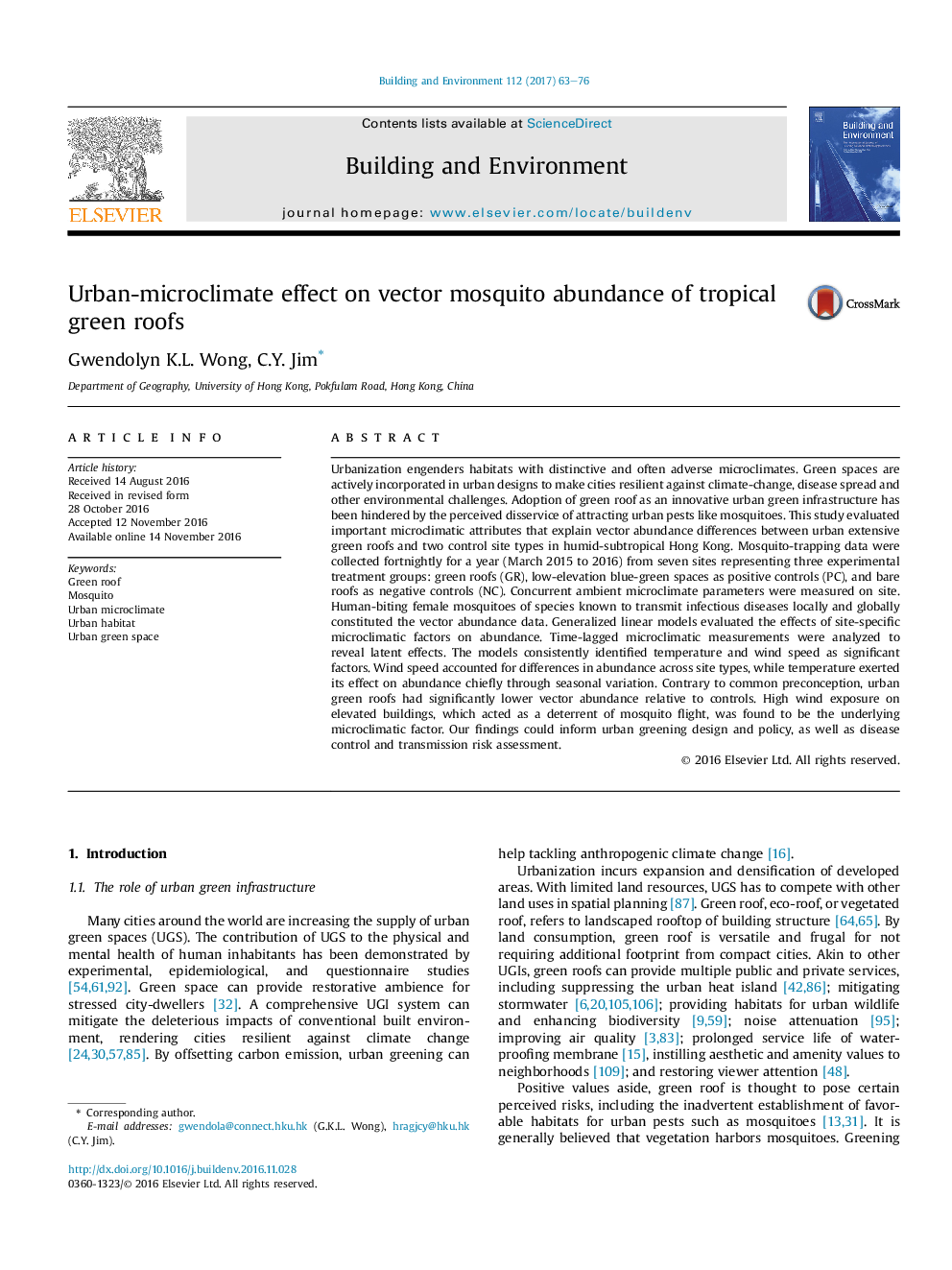| کد مقاله | کد نشریه | سال انتشار | مقاله انگلیسی | نسخه تمام متن |
|---|---|---|---|---|
| 4917454 | 1428380 | 2017 | 14 صفحه PDF | دانلود رایگان |
عنوان انگلیسی مقاله ISI
Urban-microclimate effect on vector mosquito abundance of tropical green roofs
ترجمه فارسی عنوان
اثر میکروکلایتی شهری بر فراوانی پشه های برفی از سقف های سبز گرمسیری
دانلود مقاله + سفارش ترجمه
دانلود مقاله ISI انگلیسی
رایگان برای ایرانیان
کلمات کلیدی
سقف سبز، پشه محیط زیست شهری، زیستگاه شهری، فضای سبز شهری،
موضوعات مرتبط
مهندسی و علوم پایه
مهندسی انرژی
انرژی های تجدید پذیر، توسعه پایدار و محیط زیست
چکیده انگلیسی
Urbanization engenders habitats with distinctive and often adverse microclimates. Green spaces are actively incorporated in urban designs to make cities resilient against climate-change, disease spread and other environmental challenges. Adoption of green roof as an innovative urban green infrastructure has been hindered by the perceived disservice of attracting urban pests like mosquitoes. This study evaluated important microclimatic attributes that explain vector abundance differences between urban extensive green roofs and two control site types in humid-subtropical Hong Kong. Mosquito-trapping data were collected fortnightly for a year (March 2015 to 2016) from seven sites representing three experimental treatment groups: green roofs (GR), low-elevation blue-green spaces as positive controls (PC), and bare roofs as negative controls (NC). Concurrent ambient microclimate parameters were measured on site. Human-biting female mosquitoes of species known to transmit infectious diseases locally and globally constituted the vector abundance data. Generalized linear models evaluated the effects of site-specific microclimatic factors on abundance. Time-lagged microclimatic measurements were analyzed to reveal latent effects. The models consistently identified temperature and wind speed as significant factors. Wind speed accounted for differences in abundance across site types, while temperature exerted its effect on abundance chiefly through seasonal variation. Contrary to common preconception, urban green roofs had significantly lower vector abundance relative to controls. High wind exposure on elevated buildings, which acted as a deterrent of mosquito flight, was found to be the underlying microclimatic factor. Our findings could inform urban greening design and policy, as well as disease control and transmission risk assessment.
ناشر
Database: Elsevier - ScienceDirect (ساینس دایرکت)
Journal: Building and Environment - Volume 112, 1 February 2017, Pages 63-76
Journal: Building and Environment - Volume 112, 1 February 2017, Pages 63-76
نویسندگان
Gwendolyn K.L. Wong, C.Y. Jim,
